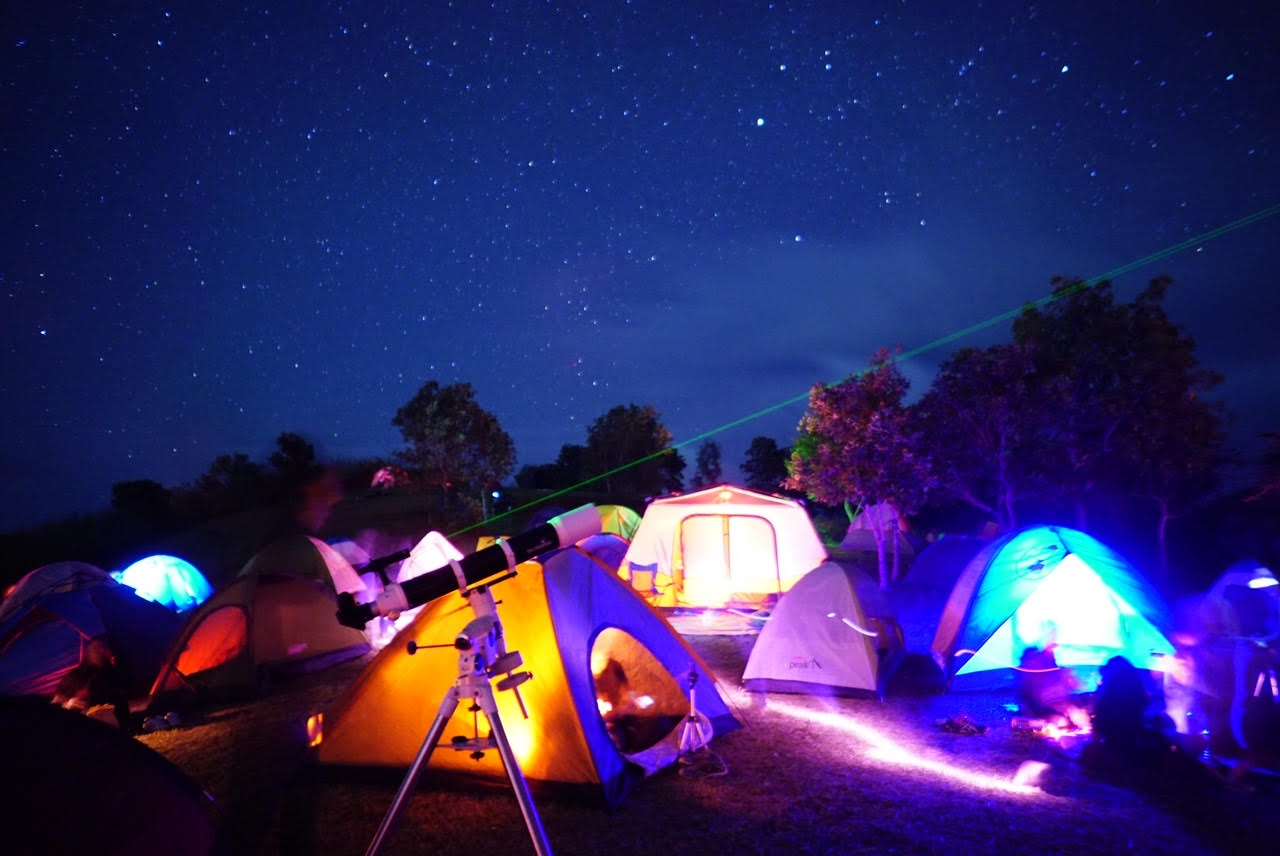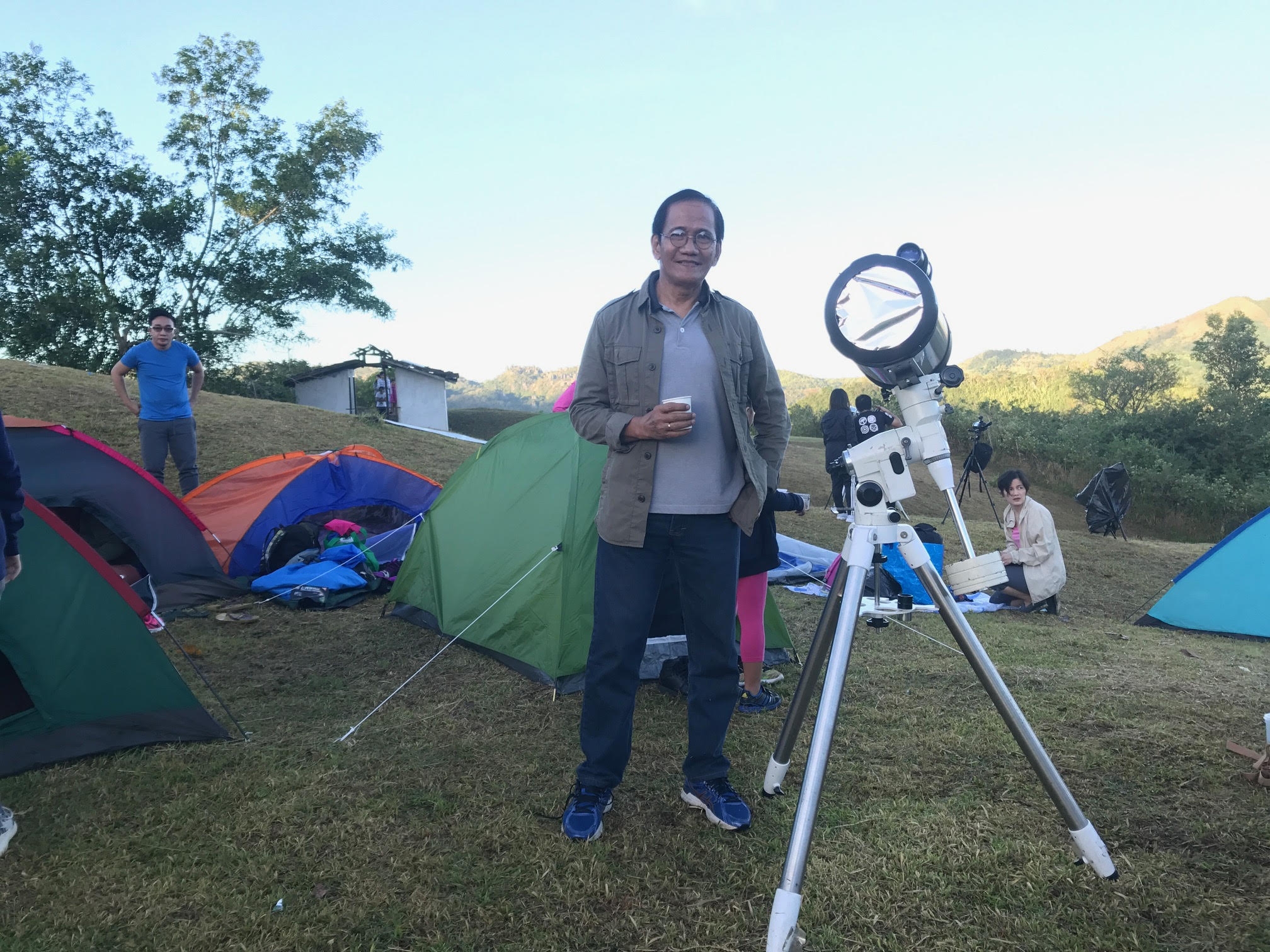They love this night life: Astrotourism draws more Pinoys

SKY PARK The camp site set up by the Philippine Astronomical Society in Tanay, Rizal, for a night of stargazing on Dec. 8. —AIE BALAGTAS SEE
Dylan Francisco sat patiently beside an orange tent that looked like a spaceship waiting for the shooting stars in the cool December night under the dark sky of Tanay.
The sparkling spectacle that the 7-year-old boy had only read about in books, or seen in movies and online videos, was just moments away and he could hardly wait for the meteor shower show.
“It’s our first time to join this kind of tour,” said Dylan’s father, engineer Leo Francisco, 38.
Dylan and his father were among 150 campers who joined the overnight stargazing tour organized by the Philippine Astronomical Society Inc. (PAS) at Big Handy’s Grounds in Tanay, Rizal, on Dec. 8.
Free of light pollution
The two have been climbing mountains together but it was their first time to visit a sky park — a wide open space free of light pollution where people could gaze at the immense night sky and see the stars shine at their brightest.
What made it more special for homeschooled Dylan was that it was his first “field trip.”
“He gets to choose what branch of science he wishes to study and he chose astronomy,” his father explained.
PAS organizes such camping trips — three this year — to educate people from all walks of life and all ages about practical and popular astronomy, shatter myths about heavenly bodies, and learn astrophotography.
“You can’t simply study astronomy inside the classrooms. You have to be here, outside the walls. Astronomy has no other laboratory except the sky,” said PAS president Kashogi Astapan.
One lecturers also tried to quelch the sense of mystery in what people see in or beyond the clouds, such as strange lights that some believe come from alien space ships but are actually just airplanes flying by.
The trip was also an escape from city life. There was no phone signal and no social media to distract anyone in that part of Tanay.
Campers were kept busy interacting with each other or learning from PAS instructors, who patiently answered their questions.
The most passionate instructor was astronomer and meteorologist Edmund Rosales, a former PAS president, who shared his celestial knowledge from dusk till dawn. Nonstop.
Movement of stars
He explained patiently the movement of the stars, the names of the constellations, and why the Pleiades star cluster is called the Rosary Constellation in the Philippines.
Rosales also showed the campers how to spot a satellite, how to distinguish a planet from a star and tricks to locate the Andromeda Galaxy, the North Star, the Big Dipper and Orion’s Belt.
He even gave a tip on getting the nicest rooms in any hotel by following the sun — rooms at the eastern side are cooler by the end of the day and western rooms heat up from noon to sunset.
Such lectures would have made most students sleepy, but Rosales’ lively approach to the serious and technical subject entertained rather than lulled his audience, who punctured the dark silence at Big Handy with laughter at his humor.
Loud “aaahs” also followed his explanations for what most people take for granted, like sunrise and sunset.
It is more correct to say, he said, that the sun rises in the eastern horizon, rather than just “the east” since the sun really doesn’t rise and set at the same spots the whole year round.
It was PAS’ last stargazing trip for 2018 and it was fully booked.
The participants traveled about 42 kilometers from Quezon City to Tanay on three buses for two hours to catch the Geminid meteor shower.
Big Handy owners, May and her husband, Ernie Serrano, welcomed the stargazers to the 2-hectare hilly property, which is surrounded by trees but still gave a 360-degree view of the sky.
May, an advocate for the environment, said her father bought the property and wanted to turn it into a farm. But he died before realizing this dream and May took over.
Initial plan
“The initial plan was to build a resort here. But my husband and I realized that we would destroy mountains and pollute the environment. So we opted not to push through with that plan,” she said.
The decision to choose to protect the environment over putting up a bustling resort was difficult. At one point she didn’t know what to do with it anymore, May said.
“One night, I decided to stay here, I was praying for guidance. When I looked up, I saw the stars and suddenly I found the answer. It’s weird and you may not believe me but the message was very clear: share this place,” she said.
After that, May asked herself: “How could I share this place?”
“Immediately, when I got home, I sent e-mails to all groups that were holding stargazing tours, and PAS was the first to respond. It’s a perfect match,” she said.
That was in 2012. Since then, the couple have been promoting low-impact tourism as the main core of Big Handy operations.
To avoid harming the environment, Big Handy has an ongoing experiment on “nature dependence” by using solar power and a water system fed by a spring, May said.
The place has no rules except to bring your garbage home, don’t waste water, avoid using white light that hampers stargazing and generate as little solid waste as possible.
Astrophysicist Camilo Dacanay, PAS board chair, said a tour like this was an alternative to the night life of urban dwellers and a vehicle to promote scientific education.
It is also a channel for astronomy lovers to band together and expand their knowledge about the heavens, he said.
According to Dacanay, a consultant at the Department of Tourism, there is a growing interest in stargazing tours and this is now a global trend called “astrotourism.”
The trip costs P650 for PAS members and P1,000 for nonmembers. Dacanay said the money is used to purchase telescopes and fund their outreach activities in schools and far-flung areas.
“With events like this, we can study deeper what we see in the sky. It’s an ancient human curiosity to find out why are we here. And this activity is curiosity-driven, people want to know why we are here,” Dacanay said.
